Paper, The development of the electroreceptors of the platypus
A series of developmental stages of the platypus were examined to obtain an anatomical description of the development of the periphery of the electroreceptive system. Putative electroreceptors, composed of modified mucous glands, were observed to appear at 10 days post hatching (p.h.). The typical striped arrangement of peripheral electroreceptors in the platypus was seen at […]
A synthetic strategy to incorporate catechol functional groups into benzoxazine thermoset monomers was developed, leading to a family of bioinspired small-molecule resins and main-chain polybenzoxazines derived from biologically available phenols. Lap-shear adhesive testing revealed a polybenzoxazine derivative with greater than 5 times improved shear strength on aluminum substrates compared to a […]
For our connection this week we did research on the single proteins and how they prompt mature brain cells to regenerate multiple cell types. In this article we see how a single protein can reverse the developmental clock for an entire adult brain and their cells known as their astrocytes cells. […]
This upperdivision course begins with an open-ended question (“What is design?”) and asks students to think critically about the central tenets, commonalities, and limits of design in an ever-changing complex world. A historical and theoretical overview of predominant schools of thought across all scales of design (i.e. industrialization, modernism, post-modernism, and beyond) will ground the […]
The Messersmith Lab at UC Berkeley is a bioinspired materials science and bioengineering lab. They study “structure-processing-property relationships of materials in biological systems,” and use this information to inform the design, synthesis, and application of biologically inspired synthetic materials. Some of their current projects include molecular mechanochemical […]
“Physicists, chemists, and immunologists at McMaster University have teamed up to modify red blood cells to transport viral agents which can safely trigger the immune system to protect the body against SARS-CoV-2, creating a promising new vehicle for vaccine delivery.” – McMaster University. “Researchers re-engineer red blood cells to trigger immune system against COVID-19.” ScienceDaily. […]
While surface microstructures of butterfly wings have been extensively studied for their structural coloration or optical properties within the visible spectrum, their properties in infrared wavelengths with potential ties to thermoregulation are relatively unknown. [This paper’s] findings suggest that the surface microstructures of butterfly wings potentially contribute to thermoregulation and provide […]
Reversing the developmental clock on adult brain cells
A single protein can reverse the developmental clock on adult brain cells called astrocytes, morphing them into stem-like cells that produce neurons and other cell types, UT Southwestern researchers report in a new study. The findings might someday lead to a way to regenerate brain tissue after disease or injury.
Biomimicry, adapting and implementing nature’s designs provides an adequate first-order solution to achieving superior mechanical properties. However, the design space is too vast even using biomimetic designs as prototypes for optimization. Here, we propose a new approach to design hierarchical materials using machine learning, trained with a database of hundreds of thousands of structures from […]
The paper discusses the significance of the newly designed voltage dependent calcium channel blockers. These channels facilitate the conversion of membrane electrical signals into Ca 2+ influx. This process helps in scenarios ranging from muscle contraction to synaptic transmission. These channel blockers are very important in aiding […]
Whole genome duplication (WGD) has occurred in relatively few sexually reproducing invertebrates. Consequently, the WGD that occurred in the common ancestor of horseshoe crabs ~135 million years ago provides a rare opportunity to decipher the evolutionary consequences of a duplicated invertebrate genome. Here, we present a high-quality genome assembly for the […]
“This paper presents a bioinspired landing system for autonomous aerial robots, built on the inspire–abstract–implement design paradigm and an additive manufacturing process for soft thermoplastic materials. This novel landing system consists of 3D printable Sarrus shock absorbers and soft landing pads which are integrated with an one-degree-of-freedom […]
This paper analyses how the microstructures and mechanical properties of horns can be related to different species’ fighting behaviours. 4 representative ruminant species: the bighorn sheep, domestic sheep, mountain goat and pronghorn were investigated. The mechanical properties of the horns under tensile stress […]
Physicists, chemists and immunologists at McMaster University have teamed up to modify red blood cells to transport viral agents which can safely trigger the immune system to protect the body against SARS-CoV-2, creating a promising new vehicle for vaccine delivery.
Learn more (opens external site)
Color Change in Cephalopods
This paper describes how Cephalopods are capable of blending in with their environments through multiple layers of skin. Their camoflauge is unique because they can mimic color, movement, texture, and light, allowing them to blend in to a greater extent.
Learn more (opens external site)
The paper looks at the affects of the geometrically designed body of the killer whale, manta ray, and swordfish on their abilities to swim just below the surface of the water. The fusiform shape of the killer whale, diamond shape of the manta ray, and streamline shape […]
Over the past few years, biogenic methods for designing silver nanocomposites are in limelight due to their ability to generate semi-healthcare and para-pharmaceutical consumer goods. The present study reports the eco-friendly synthesis of silver nanoparticles from the hitherto unexplored mucus of territorial snail Achatina fulica by the facile, clean and easily […]
Battery lifetimes are lowered because of instabilities at the boundary between the solid electrolyte layer and the two electrodes on either side. The article explores a method called sintering that eliminates carbon dioxide during manufacturing, which could greatly increase the performance of batteries.
Learn more (opens external site)
To monitor and navigate real-world environments, machines and robots should be able to gather images and measurements under different background lighting conditions. In recent years, engineers worldwide have thus been trying to develop increasingly advanced sensors, which could be integrated within robots, surveillance systems, or other technologies […]
Bats utilize bisonar and echolocation to locate, and subsequently, hunt moths. A study by PNAS utilized acoustic topography to discover that moths have a repeating pattern of scales on their wings. They found that when sound waves were directed towards the wings, the echoes that bounced off were much fainter. This […]
Masks that protect against SARS-CoV-2 virus can feel like a nuisance, especially while exercising.
A new 3D-printable mask design, inspired by animal noses, promises easy breathing for users while maintaining similar levels of protection against pathogens found in N95 and surgical masks. The general concept may also be useful for improving […]
This article describes a discovery that aims for safer vehicles. Another goal was for it to reduce congestion on the roads. It describes the Eporo robot car which is modeled on the schooling behavior of fish. This makes it easier to avoid collisions and concentric zones for […]
Glitchy protein production may hasten aging
Mice with sloppy proteinmaking machinery grow old faster, study finds. Cells are continually cranking out new proteins, but like car factories, they produce some lemons. A study of mice now suggests these defective proteins speed aging, bolstering an idea first proposed 60 years ago. The new paper “fills a critical gap” […]
This paper presents the results of an experimental study on limbless snake-like locomotion. The experimental plate-form consists of a 9-DOF wheel-less snake-like robot and an appropriate artificial environment. The wheel-less snake-like mechanism has a planar structure and is mainly dedicated to move through lateral undulation, the most common limbless locomotion type observed in natural snakes. […]
Suckerfish Inspire Conservational Technology.
Suckerfish are known for hitchhiking on blue whales. Scientists recently discovered that suckerfish, contrary to previous belief, do not suction themselves to the bodies of blue whales. Instead, they hover above the whales’ skim that forms a low pressure zone that the suckerfish can ride effortlessly. This […]
Podcast, 30 Animals That Made Us Smarter
In 2019, the BBC World Service launched a 30-part podcast about amazing animals and what we have learned from them. BBC’s 30 Animals That Made Us Smarter brings together the wonders of the animal kingdom with innovation and technology.
Each episode, hosted by biologist Patrick Aryee, lasts between 11 and 20 […]
Researchers from Duke University discovered that a sponge is a better incubator than a petri dish used in labs at providing the perfect environment for a great diversity of bacteria to thrive. It is not only that sponges are often dirty with food pieces left unwashed in there, it is also […]
Swimming speed of geometrically similar animals is independent of body size. Consequently, required time for a given period has direct correspondence to linear size of animals. In other words, stroke frequency is proportional to mass (f∝m^-1/3) or length (f∝l^-1) for energy efficient swimming.
[…]
With more research on hummingbird flight precision and its everyday implications, having drones that can effectively examine natural uncharted territories might happen sooner than previously believed. These drone advancements can be applied to weather monitoring, parcel shipping and even cinematography.
Learn more (opens external site)
A long-standing goal of biology is the ability to predict gene expression from DNA sequence. A type of artificial intelligence known as a neural network, combined with high-throughput experiments, now brings this goal a step closer.
Learn more (opens external site)
Considering the many advances in computational biology that have yet to come, it is pertinent for scientists in this discipline to connect with colleagues of similar research interests. To facilitate communication with fellow scientists, the Center for Computational Biology Seminar Series invites professors from national and international research institutions to talk […]
The invertebrates ability to adapt to the environment during motion represents an intriguing feature to inspire robotic systems. We analysed the sipunculid speciesPhascolosoma stephensoni(Sipunculidae, Annelida), and quantitatively studied the motion behaviour of this unsegmented worm. The hydrostatic skeleton and the muscle activity make the infaunalP.stephensoniable to extrude part of its body […]
The PharmaSea, an EU-funded project, seeks to discover products that can cure infections and other diseases. They recently conducted this case study to determine which marine organisms are capable of producing biologically natural products to help treat human diseases. The results discovered in this case study are life-changing and can potentially […]
At this month’s Midday Science Cafe, we’ll learn about two new meat alternatives made from foods we already know and love: seaweed and mushrooms! First course: seaweed. Dr. Amanda Stiles from Berkeley Lab is researching ways to extract the protein from seaweeds and incorporate it into delicious new foods. The highly-digestible, […]
Hello everyone,
Do you ever wonder what happens to science once it leaves the lab? If you had the opportunity, would you want your voice to be part of the conversation?
Join the Science Policy Groups at UCSF and UC Berkeley for our first ever Science Ethics and Policy […]
Inspired by the workings of a bat’s ear, Rolf Mueller, a professor of mechanical engineering at Virginia Tech, has created bio-inspired technology that determines the location of a sound’s origin.
Learn more (opens external site)
Centimetre-scale fliers must contend with the high power requirements of flapping flight. Insects have elastic elements in their thoraxes which may reduce the inertial costs of their flapping wings. Matching wingbeat frequency to a mechanical resonance can be energetically favourable, but also poses control challenges. Many insects use frequency modulation on […]
Berkeley Certificate in Design Innovation, 4 Course Series, UC Berkeley
In today’s world, innovations require weaving together the knowledge, theories and skills of different disciplines. This Certificate introduces design as the creative and critical means to innovate — to define, to imagine, and to advance a globally just future.
The Berkeley Certificate in Design Innovation assumes that […]
News, Flexible wings take the effort out of swimming for diving penguins
Swimming with penguins in the wild is a mind-blowing experience. When the ‘mini torpedoes’ hurtle past, you can barely make out the animals’ shape, let alone their movements. This was the problem faced by Hiroto Tanaka and colleagues from the Tokyo Institute of Technology, Japan, as they tried to understand how […]
Petroleum-based plastics are useful but they pose a great threat to the environment and human health. As a result, it is highly desirable yet challenging to develop sustainable structural materials with excellent mechanical and thermal properties for plastic replacement. Inspired by nacre’s multiscale […]
Learn about our two Decals!
 Click here to find out more about our Fall Bioinspired Design Decal and our Spring Bioinspired Design in Action Decal – ALL MAJORS are welcome.
Click here to find out more about our Fall Bioinspired Design Decal and our Spring Bioinspired Design in Action Decal – ALL MAJORS are welcome.Berkeley BioDesign Community
 Click here to learn about the BioD: Bio-Inspired Design @ Berkeley student organization or here to signup for more info.
Click here to learn about the BioD: Bio-Inspired Design @ Berkeley student organization or here to signup for more info.Search
Student Login

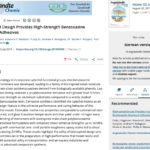



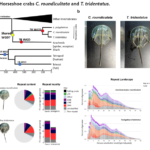
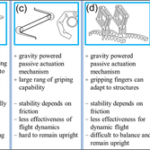


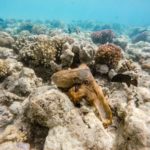
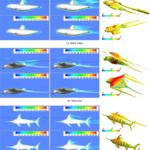
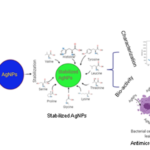
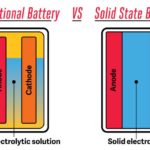
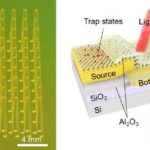

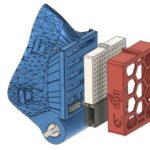
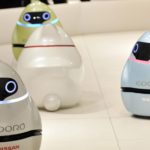

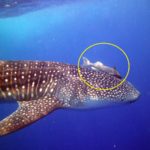
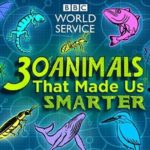



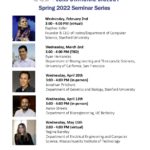




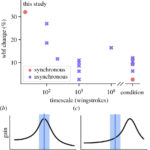

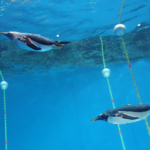



I imagine that the neurological circuits underlying these processes are governed by both 2d spacing maps with their brains as…
to reduce the impact of car accidents, it may be possible to study the force diverting physics of cockroaches to…
you see this type of head-bobbing stability in many avian creatures related to pigeons like chickens. the head ability to…
not like they taught horses how to run! this is an example of convergent evolution where both sea creatures and…
The brain functions in a similar way with neuronal connections. our brains are able to utilize the multiplicity of connections…